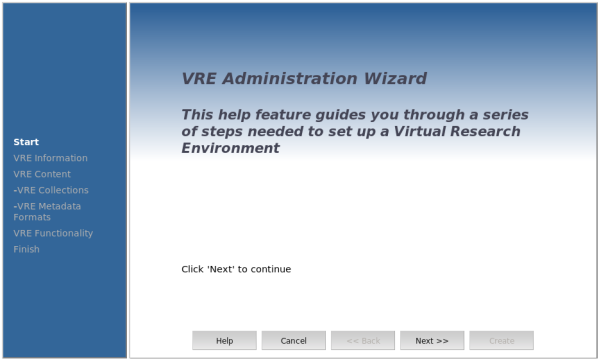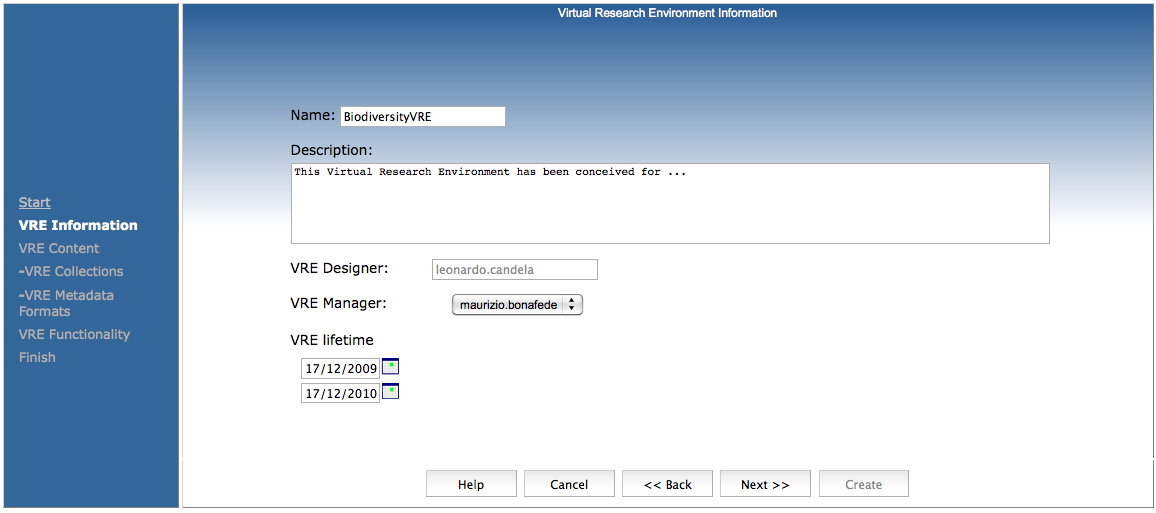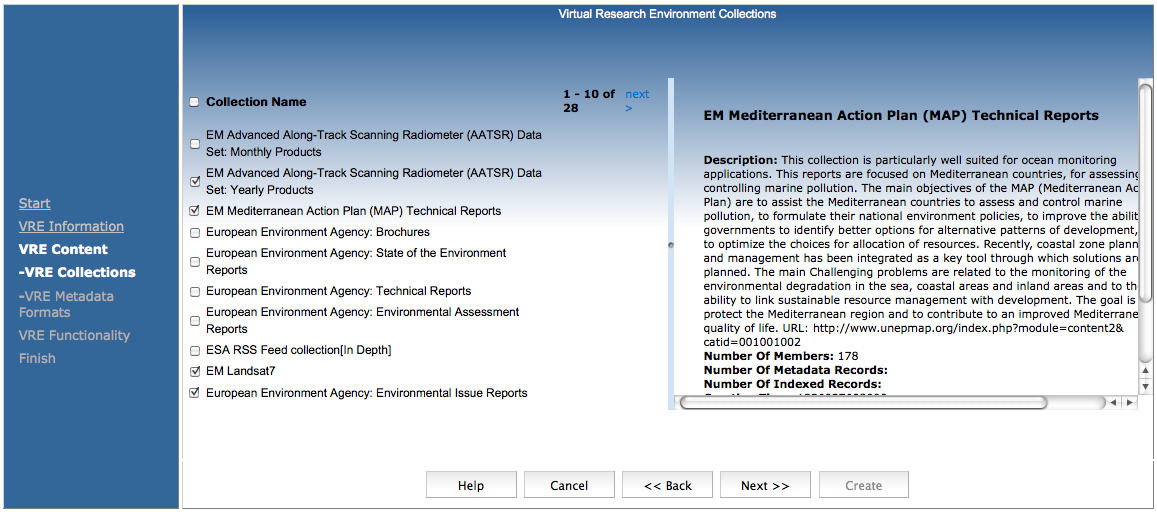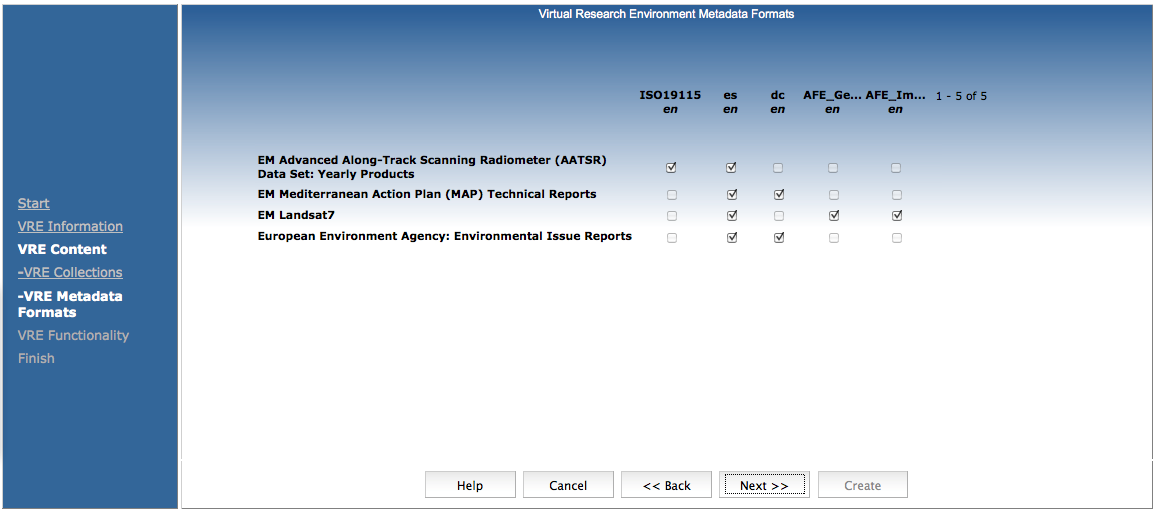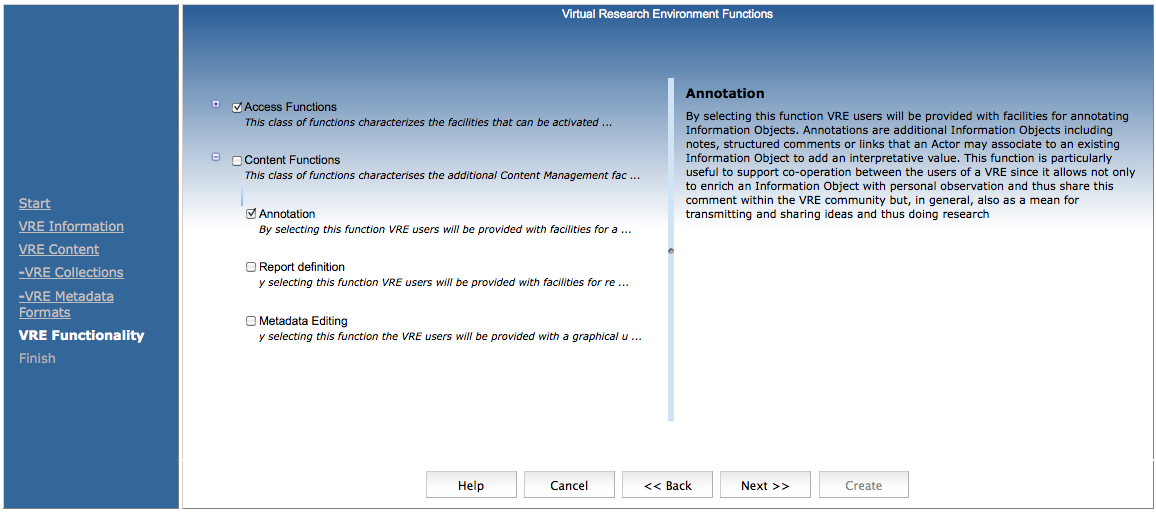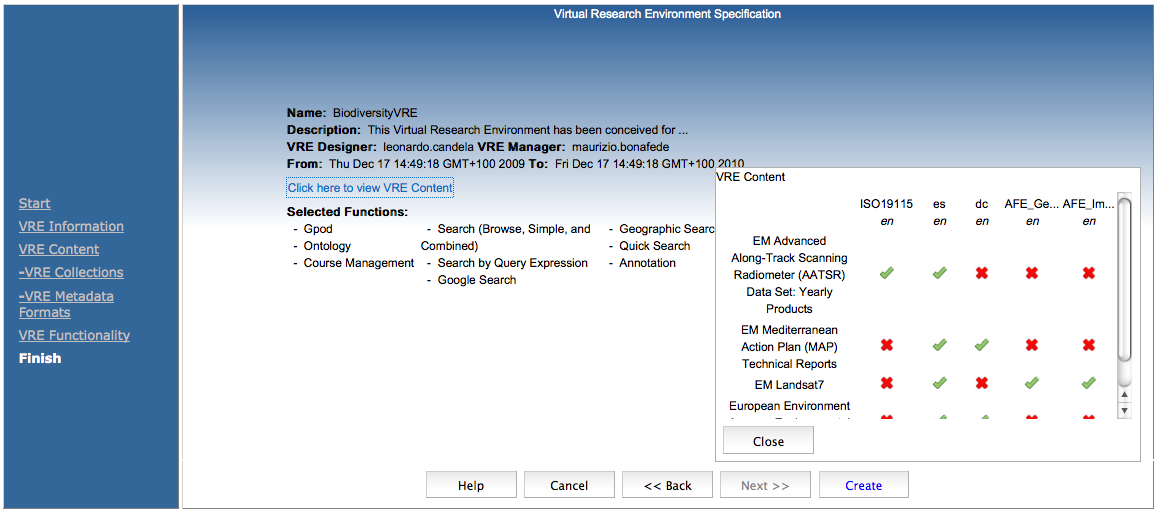Difference between revisions of "VRE Administration"
m (Introduction drafting) |
(→VRE Definition: Section Drafting) |
||
| Line 12: | Line 12: | ||
== VRE Definition == | == VRE Definition == | ||
| − | + | ||
| + | The VRE Definition is the procedure performed by the ''VRE Designer'' and leading to the specification of a Virtual Research Environment, i.e. the selection of the resources and the identification of other characteristics describing the desiderata for a VRE devised to serve the needs of a specific community. | ||
| + | |||
| + | This procedure is supported by a dedicated portlet, the VRE Definition Portlet, that implements a '''''wizard-based''''' approach. | ||
| + | |||
| + | This portlet guide the VRE Designer through the following steps: | ||
| + | # '''''VRE Profile Specification''''': the VRE Designer should enter data characterising the VRE profile. In particular, he/she should specify the ''VRE name'' and the ''VRE description'', should select the user that will play the role of ''VRE Manager'' (by selecting among the pool of users having such privilege in the Virtual Organisation the VRE will operate in) and should specify the expected duration time, i.e. the start date and the end date characterising the lifetime of the VRE; | ||
| + | # '''''Collection Selection''''': the VRE Designer is provided with the list of collections currently available in the Virtual Organisation the VRE will operate in and, by relying on the description of these data sources, should identify those pertinent to the application scenario the VRE is devised for. For each collection, the VRE Designer is provided with a description and other information like the number of elements or the creation date helping to identify the proper ones; | ||
| + | # '''''Metadata Selection''''': the VRE Designer is provided with the list of metadata formats collection items can be described with and should identify those pertinent to the application scenario the VRE is devised for. For each collection the VRE Designer can select one or more metadata formats. These metadata formats will characterise some of the functionality of the resulting VRE, e.g. the end users will rely on them to discover the information objects in the collection VREs. For each metadata format the VRE Designer is provided with descriptive information; | ||
| + | # '''''Functionality Selection''''': the VRE Designer is provided with the list of functionality that can be deployed and should identify those pertinent to the application scenario the VRE is devised for. For each functionality, the VRE Designer is provided with descriptive information; | ||
| + | # '''''VRE Specification Summary''''': the VRE Designer is provided with the overall specification resulting from the previous steps and should either submit this specification for approval or change some of the choices. | ||
| + | |||
| + | <gallery> | ||
| + | Image:VREStart.png|Wizard Welcome Page | ||
| + | Image:VREInformation.png|VRE Profile Specification | ||
| + | Image:VRECollections.png|Collection Selection | ||
| + | Image:VREMetadataFormats.png|Metadata Selection | ||
| + | Image:VREFunctionality.png|Functionality Selection | ||
| + | Image:VRESpecSummary.png|VRE Specification Summary | ||
| + | </gallery> | ||
== VRE Approval == | == VRE Approval == | ||
Revision as of 22:42, 8 July 2009
Virtual Research Environments (VREs) are the cooperation environments defined in the context of a Virtual Organisation (VO) user communities are provided with to accomplish specific tasks. These cooperation environments are equipped with specific facilities and resources (e.g. collections and data sources) deemed relevant with respect to the application scenario the VRE has been conceived for. The overall resources (e.g. computing resources, collection, services) supporting the operation of the VRE are dynamically aggregated by relying on those forming the VO while the operation of the VRE is automatically guaranteed by the set of services forming the Core Services.
The administration of these cooperation environments is a four tasks activity envisaging:
- a definition phase in which a user having the role of VRE Designer specifies the characteristics of a new VRE conceived to serve an application scenario;
- an approval phase in which a user having the role of VRE Manager decides whether the specified VREs have to be accepted or rejected. For what is concerned with the accepted VRE, the VRE Manager decides also how this VRE has to be deployed, e.g. which hosting nodes will be exploited;
- a verification phase in which a user having the role of VRE Manager validates a VRE resulting from the approval phase;
- a management phase in which a user having the role of VRE Manager operates on a deployed VRE in order to customise specific aspects (e.g. the layout governing the placement of user interfaces constituents a.k.a. portlets) or monitor the operational state of the VRE as a whole.
VRE Definition
The VRE Definition is the procedure performed by the VRE Designer and leading to the specification of a Virtual Research Environment, i.e. the selection of the resources and the identification of other characteristics describing the desiderata for a VRE devised to serve the needs of a specific community.
This procedure is supported by a dedicated portlet, the VRE Definition Portlet, that implements a wizard-based approach.
This portlet guide the VRE Designer through the following steps:
- VRE Profile Specification: the VRE Designer should enter data characterising the VRE profile. In particular, he/she should specify the VRE name and the VRE description, should select the user that will play the role of VRE Manager (by selecting among the pool of users having such privilege in the Virtual Organisation the VRE will operate in) and should specify the expected duration time, i.e. the start date and the end date characterising the lifetime of the VRE;
- Collection Selection: the VRE Designer is provided with the list of collections currently available in the Virtual Organisation the VRE will operate in and, by relying on the description of these data sources, should identify those pertinent to the application scenario the VRE is devised for. For each collection, the VRE Designer is provided with a description and other information like the number of elements or the creation date helping to identify the proper ones;
- Metadata Selection: the VRE Designer is provided with the list of metadata formats collection items can be described with and should identify those pertinent to the application scenario the VRE is devised for. For each collection the VRE Designer can select one or more metadata formats. These metadata formats will characterise some of the functionality of the resulting VRE, e.g. the end users will rely on them to discover the information objects in the collection VREs. For each metadata format the VRE Designer is provided with descriptive information;
- Functionality Selection: the VRE Designer is provided with the list of functionality that can be deployed and should identify those pertinent to the application scenario the VRE is devised for. For each functionality, the VRE Designer is provided with descriptive information;
- VRE Specification Summary: the VRE Designer is provided with the overall specification resulting from the previous steps and should either submit this specification for approval or change some of the choices.
VRE Approval
Approving the Virtual Research Environment
VRE Verification
Verifying the Virtual Research Environment correctness
VRE Management
Managing the Virtual Research Environment
VRE Layout Specification
Creating the Virtual Research Environment Layout
VRE Information Space Specification
Editing the Virtual Research Environment Information Space
VRE Users Management
Managing Virtual Research Environment Users
VRE Monitoring
Monitoring the Virtual Research Environment through the Information System
